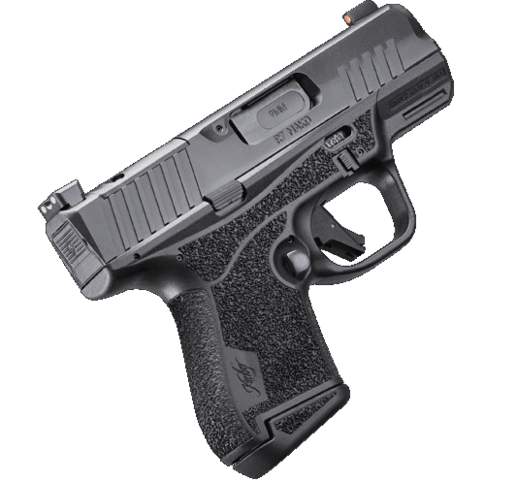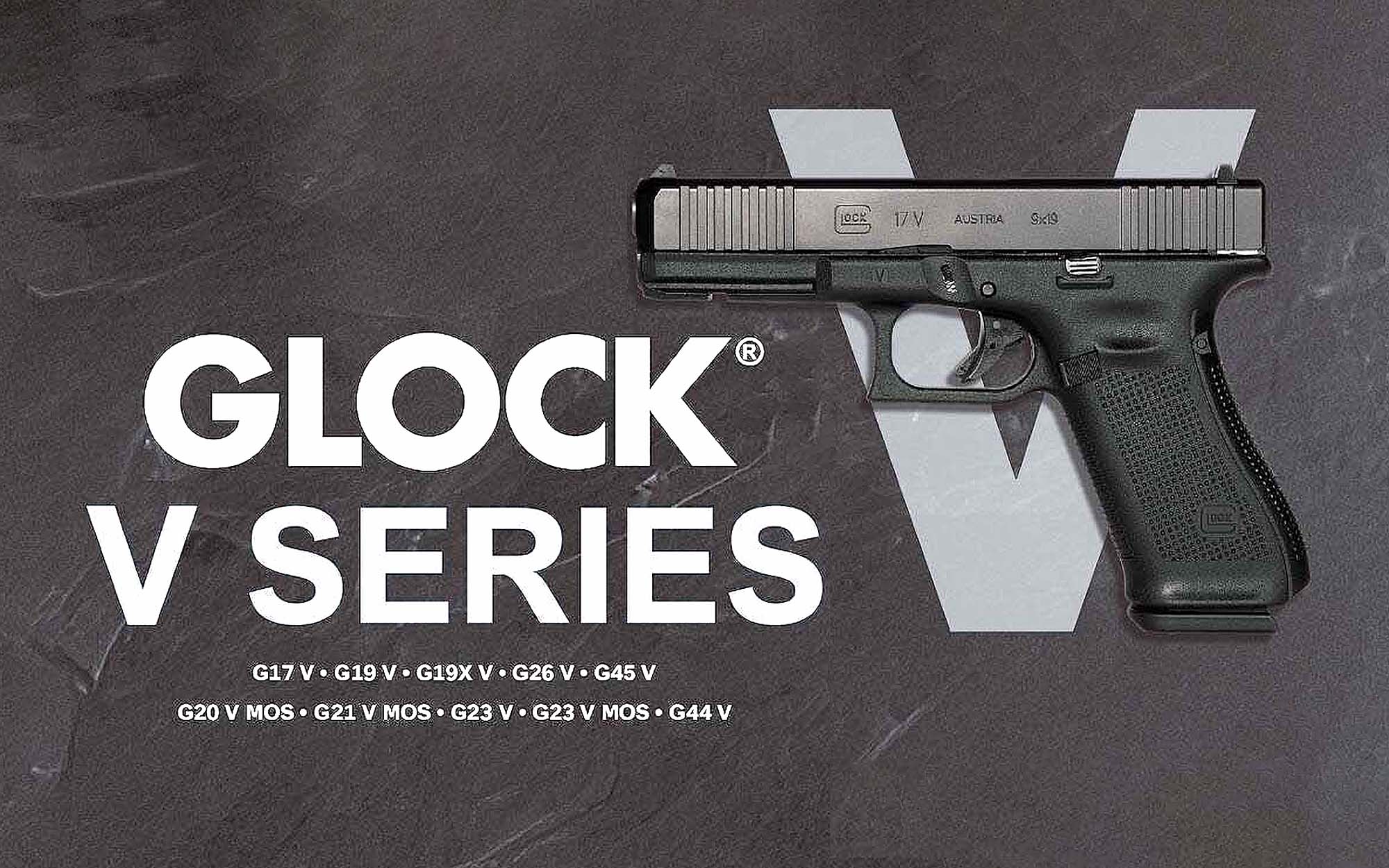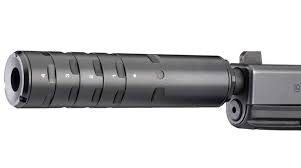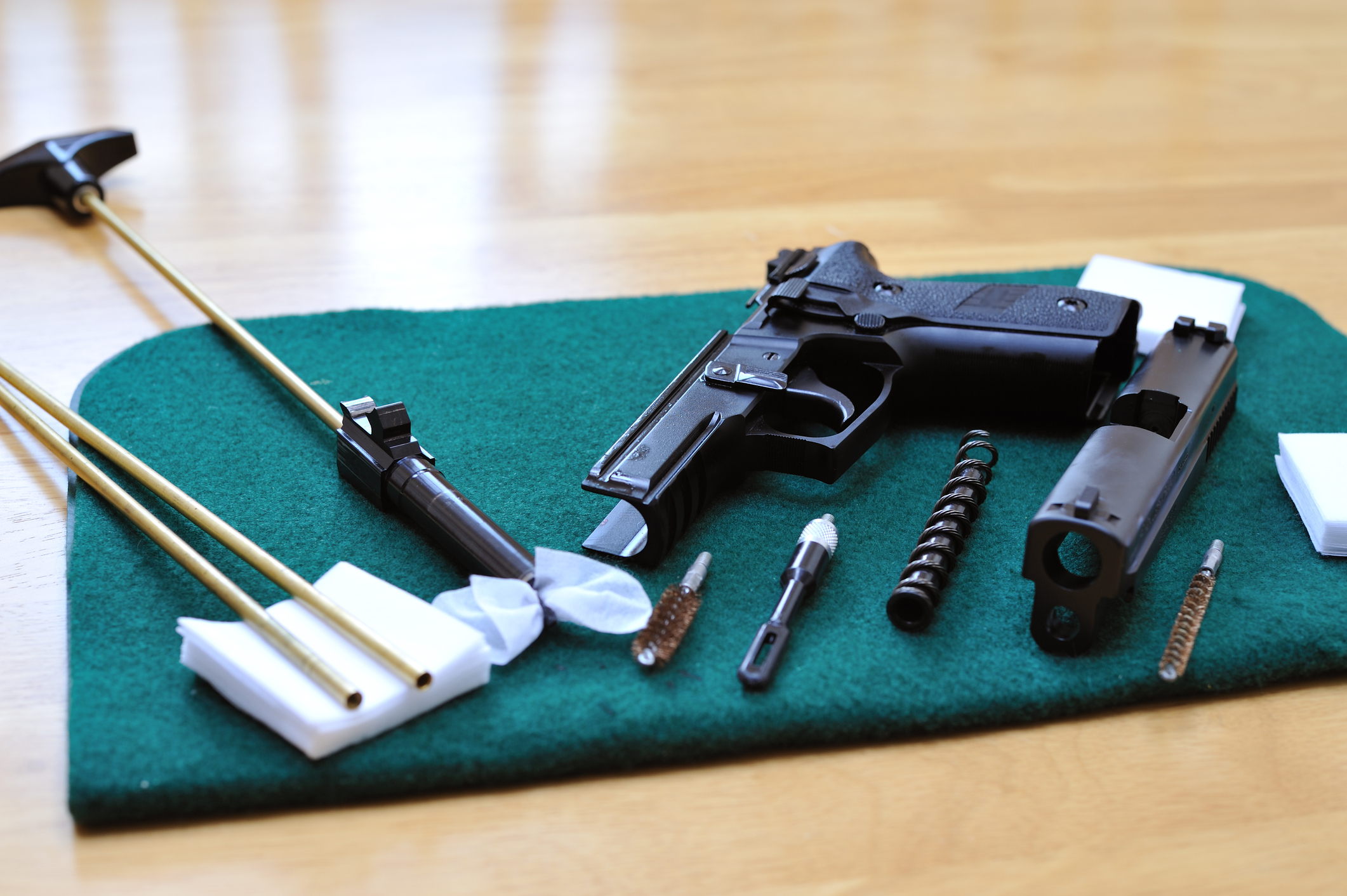Polymer frame firearms have become increasingly popular in recent years, thanks to their lightweight construction and durability. Whether you're a seasoned firearm enthusiast or a beginner, understanding how to properly care for and maintain these firearms is crucial to ensure their optimal performance and longevity.
In this blog post, we will delve into the basics of polymer frame firearms, exploring their advantages and discussing why regular cleaning and maintenance are essential. We will walk you through a step-by-step cleaning process, highlighting the supplies you'll need and the techniques you should employ.
In This Article We Discuss
Understanding Polymer Frame Firearms: Basics and Advantages
Polymer frame firearms have gained significant popularity in recent years, revolutionizing the firearms industry with their unique construction and numerous advantages. In this section, we will explore the basics of polymer frame firearms and highlight the advantages they offer over traditional metal frame firearms.
What are Polymer Frame Firearms?
Polymer frame firearms, also known as polymer-framed guns, are firearms that feature a frame made primarily of synthetic polymer materials, such as nylon or fiberglass-reinforced polymer. Unlike traditional firearms with metal frames, polymer frame firearms utilize the strength, lightweight nature, and corrosion-resistant properties of polymers.
Advantages of Polymer Frame Firearms
- Lightweight Construction: One of the most significant advantages of polymer frame firearms is their lightweight nature. Compared to metal frame firearms, polymer frame firearms are generally lighter, making them more comfortable to carry and handle for extended periods.
- Durability and Corrosion Resistance: Polymer frame firearms are highly resistant to corrosion. Unlike metal frames that can rust or corrode over time, polymer frames are not susceptible to these issues, making them ideal for use in various environments, including humid or wet conditions.
- Absorption of Recoil: The polymer material used in the frame of these firearms has a natural ability to absorb recoil. This feature makes shooting more comfortable, especially for those who are sensitive to recoil or engage in extended shooting sessions.
- Cost-Effective: Polymer frame firearms tend to be more cost-effective compared to their metal frame counterparts. The manufacturing process for polymer frames is often less expensive, resulting in more affordable firearms for consumers.
- Lower Maintenance Requirements: Polymer frames are less prone to scratches and dents compared to metal frames, reducing the need for extensive maintenance and refinishing. Additionally, the corrosion-resistant properties of polymer frames mean less time spent on cleaning and preventing rust.
- Design Flexibility: The use of polymer materials allows for greater design flexibility in firearms. Manufacturers can create ergonomic grips and frames with textured surfaces for enhanced grip and control. Polymer frames also offer the possibility of incorporating accessory rails for attaching lights, lasers, or other add-ons.
- Reduced Heat Absorption: Polymer frames have lower heat absorption compared to metal frames, resulting in reduced thermal transfer during extended shooting sessions. This can help prevent discomfort or burns caused by high-temperature metal frames.
Understanding the basics and advantages of polymer frame firearms is essential for appreciating their unique qualities. Whether it's the lightweight construction, durability, or cost-effectiveness, polymer frame firearms offer a range of benefits that make them a popular choice among firearm enthusiasts. In the next section, we will discuss the proper cleaning techniques to keep your polymer frame firearm in optimal condition.
How to Clean Your Polymer Frame Firearm
Cleaning your polymer frame firearm regularly is crucial for maintaining its performance, reliability, and longevity. In this section, we will guide you through the step-by-step process of cleaning your polymer frame firearm. We will discuss the importance of regular cleaning, the supplies you'll need, and provide detailed instructions to ensure a thorough cleaning.
Why Regular Cleaning is Essential
Regular cleaning of your polymer frame firearm is essential for several reasons:
- Maintaining Functionality: Over time, dirt, debris, and residue can accumulate in the firearm, affecting its functionality. Regular cleaning helps remove these contaminants, ensuring smooth operation and reliable performance.
- Preventing Corrosion: Although polymer frames are highly resistant to corrosion, other metal components of the firearm, such as the barrel and slide, can still be susceptible. Cleaning helps remove any moisture or corrosive substances that may lead to rust or corrosion.
- Ensuring Safety: A clean firearm is a safe firearm. Regular cleaning allows you to inspect the firearm for any signs of wear, damage, or malfunction that may compromise its safety. It also provides an opportunity to ensure proper functioning of the safety mechanisms.
BUY SMITH AND WESSON HERE!
RequiredSupplies for Cleaning
Before you begin cleaning your polymer frame firearm, gather the following supplies:
- Cleaning Solvent: Choose a solvent specifically designed for firearms cleaning. Ensure that it is compatible with polymer frames and safe to use on the various components of your firearm.
- Lubricant: Select a firearm lubricant that is suitable for polymer frames. It should offer corrosion protection while reducing friction and wear.
- Bore Brush: A bore brush is used to clean the barrel of the firearm. Select a brush that matches the caliber of your firearm.
- Cleaning Patches or Cloths: These are used to apply cleaning solvent and remove dirt and residue from the firearm's surfaces.
- Toothbrush or Small Brush: A toothbrush or small brush with soft bristles can be used to clean hard-to-reach areas and remove stubborn dirt or debris.
- Cleaning Rod or Tool: A cleaning rod or tool is necessary for attaching the bore brush and guiding it through the barrel during cleaning.
- Microfiber Cloth: This cloth is ideal for wiping down and drying the firearm after cleaning.
- Safety Glasses and Gloves: It is recommended to wear safety glasses and gloves to protect your eyes and hands during the cleaning process.
Step-by-Step Cleaning Process
Follow these steps to effectively clean your polymer frame firearm:
- Clear the Firearm: Ensure the firearm is unloaded and remove any ammunition from the area.
- Disassemble the Firearm: Refer to your firearm's manual for instructions on disassembling the firearm. Take note of the specific steps for removing the slide, barrel, recoil spring, and other components.
- Cleaning the Barrel: Attach the bore brush to the cleaning rod or tool. Apply a small amount of cleaning solvent to the brush and insert it into the barrel. Move the brush back and forth several times to loosen any fouling or residue. Remove the brush and attach a cleaning patch or cloth to the cleaning rod. Moisten the patch with cleaning solvent and run it through the barrel until it comes out clean. Repeat this process until the barrel is thoroughly cleaned.
- Cleaning the Slide and Frame: Use a toothbrush or small brush to scrub the slide, frame, and other polymer components of the firearm. Dip the brush in cleaning solvent and gently scrub away any dirt, residue, or debris. Pay attention to the recessed areas and hard-to-reach spots. Wipe off the solvent and debris with a cleaning patch or cloth.
- Lubricate the Firearm: Apply a small amount of lubricant to the appropriate areas, including the slide rails, barrel hood, and other contact points. Refer to your firearm's manual for guidance on where to apply lubricant. Use a clean cloth to spread the lubricant evenly and remove any excess.
- Reassemble the Firearm: Follow the reverse order of disassembly to reassemble the firearm. Ensure that all components are properly aligned and secured.
- Final Inspection: Once the firearm is reassembled, visually inspect it for any signs of damage or wear. Ensure that all safety mechanisms are functioning properly.
Regularly cleaning your polymer frame firearm using these steps will help maintain its performance, reliability, and safety. In the next section, we will discuss the importance of periodic maintenance to ensure your firearm remains in top condition.
 How to Maintain Your Polymer Frame Firearm
How to Maintain Your Polymer Frame Firearm
Proper maintenance is key to keeping your polymer frame firearm in optimal condition and ensuring its longevity. In this section, we will discuss the essential steps for maintaining your polymer frame firearm. We will cover periodic checks for worn or damaged parts, proper lubrication techniques, safe storage recommendations, and responsible handling and usage guidelines.
Periodically Check for Worn or Damaged Parts
Regularly inspecting your polymer frame firearm for worn or damaged parts is crucial for its safe and reliable operation. Follow these guidelines for conducting a thorough examination:
- Check the Frame: Inspect the polymer frame for any cracks, chips, or signs of wear. Pay close attention to stress points and areas where the frame may experience impact or friction, such as the slide rails and grip. If you notice any damage, consult a professional gunsmith for repair or replacement.
- Examine the Barrel: Inspect the barrel for signs of erosion, pitting, or any other damage that may affect its performance. Look for excessive fouling or buildup that could impede accuracy or reliability. If you observe any issues, consult a gunsmith for further evaluation.
- Inspect the Slide and Other Components: Check the slide, recoil spring, trigger assembly, and other metal components for signs of wear, corrosion, or damage. Ensure that all parts are securely in place and functioning smoothly. If you identify any problems, seek professional assistance for repair or replacement.
Proper Lubrication Techniques
Lubrication is vital for maintaining the smooth functioning of your polymer frame firearm. Follow these steps to apply lubricant correctly:
- Use the Right Lubricant: Select a lubricant specifically designed for firearms and suitable for use with polymer frames. Avoid over-lubrication, as excessive lubricant can attract dirt and debris, leading to potential malfunctions.
- Apply Lubricant to Contact Points: Apply a small amount of lubricant to the slide rails, barrel hood, trigger assembly, and other points of contact where metal components interact. Follow the manufacturer's recommendations for specific lubrication points.
- Spread the Lubricant: Use a clean cloth or your fingertip to spread the lubricant evenly over the contact points. Ensure that the lubricant forms a thin, even film without any excess buildup.
- Wipe off Excess Lubricant: After applying lubricant, use a clean cloth to wipe off any excess lubricant from the exterior surfaces of the firearm. Excessive lubricant can attract dirt and affect the grip, so it's important to remove any excess.
Safe Storage Recommendations
Proper storage is essential to protect your polymer frame firearm and ensure its longevity. Follow these recommendations for safe firearm storage:
- Secure Storage: Store your firearm in a locked container or gun safe that is inaccessible to unauthorized individuals, especially children. Consider using a gun lock or cable lock for an added layer of security.
- Controlled Environment: Store your firearm in a cool, dry place to prevent humidity and moisture from causing corrosion. Avoid storing it near sources of heat or direct sunlight, as extreme temperatures can damage the firearm.
- Ammunition Storage: Store ammunition separately from your firearm in a secure, dry location. Ensure that the ammunition is stored in a proper container, such as an ammo can, to prevent exposure to moisture or heat.
- Regular Inspections: Periodically inspect your firearm while in storage to ensure that there are no signs of damage, corrosion, or unauthorized access. Check the condition of the storage container or gun safe and address any issues promptly.
Responsible Handling and Usage
Proper handling and responsible usage of your polymer frame firearm are paramount for safety and maintaining its condition. Follow these guidelines:
- Familiarize Yourself with Firearm Safety: Ensure that you are well-versed in firearm safety rules and principles. Familiarize yourself with the specific safety features and mechanisms of your polymer frame firearm.
- Follow Manufacturer's Recommendations: Adhere to the manufacturer's instructions regarding the use, maintenance, and storage of your firearm. This includes guidelines for ammunition selection, cleaning intervals, and any other specific recommendations.
- Practice Safe Handling: Always treat your firearm as if it is loaded, even when you know it isn't. Keep your finger off the trigger until you are ready to shoot, and never point the firearm at anything you do not intend to shoot.
- Regular Training and Practice: Invest time in regular training and practice sessions to improve your proficiency, knowledge, and confidence in handling your polymer frame firearm. Seek professional instruction if needed.
By following these maintenance guidelines, you can ensure the longevity, reliability, and safety of your polymer frame firearm. In the next section, we will address common problems that may arise with polymer frame firearms and provide solutions for minor issues.
The Future of Polymer Frame Firearms
Polymer frame firearms have already made a significant impact on the firearms industry, but what does the future hold for these innovative firearms? In this section, we will explore the latest developments and innovations in polymer frame firearms, discuss potential challenges that may arise, and provide insights into future trends and predictions.
Latest Developments and Innovations
- Advanced Polymer Composites: Manufacturers are continually researching and developing new polymer composites to enhance the strength, durability, and weight characteristics of polymer frame firearms. These advancements may result in even lighter and more robust firearms in the future.
- Customization Options: The growing popularity of polymer frame firearms has led to an increasing demand for customization options. Manufacturers are developing modular designs that allow users to easily swap out grips, frames, and other components to suit their preferences and needs.
- Improved Ergonomics: Firearm manufacturers are focusing on improving ergonomics by incorporating adjustable grips and customizable features for enhanced comfort and control. This allows shooters to tailor the firearm's fit to their individual hand size and shooting style.
- Optics Integration: Many polymer frame firearms now include accessory rails or mounting systems for integrating optics, such as red dot sights or holographic sights. This trend is likely to continue, with more firearms offering built-in optics compatibility or dedicated mounting systems.
Potential Challenges and Solutions
- Heat Resistance: One potential challenge for polymer frame firearms is their ability to withstand prolonged exposure to high temperatures, such as during rapid or sustained firing. Manufacturers are investing in research and development to improve the heat resistance properties of polymers to address this challenge.
- Longevity and Durability: While polymer frames are generally durable, long-term durability and longevity may still be a concern for some firearm enthusiasts. Continued advancements in polymer technology and engineering may address these concerns by improving the overall lifespan and durability of polymer frame firearms.
- Perception and Acceptance: Despite their proven reliability and numerous advantages, polymer frame firearms have faced some resistance in certain circles due to traditional preferences for metal frame firearms. However, as more shooters experience the benefits of polymer frame firearms and witness their continued advancements, broader acceptance and appreciation are expected to follow.
Springfield Armory Prodigy 9mm
Future Trends and Predictions
- Increased Adoption: It is likely that the adoption of polymer frame firearms will continue to rise in the coming years. The combination of their advantages, such as lightweight construction, durability, and cost-effectiveness, will attract more shooters from various backgrounds and experience levels.
- Integration of Technology: Polymer frame firearms may see increased integration of technology, such as biometric authentication systems, smart sensors, or electronic optics. These advancements can enhance safety, convenience, and performance.
- Enhanced Customization: As demand for customization options grows, manufacturers may offer increased customization options straight from the factory, allowing shooters to personalize their firearms to a greater extent.
- Continued Innovation: The firearms industry is constantly evolving, and polymer frame firearms are no exception. Continued innovation in materials, manufacturing techniques, and design will likely result in even more advanced and refined polymer frame firearms in the future.
As the future unfolds, polymer frame firearms are poised to continue their growth and impact on the firearms industry. With ongoing advancements, increased customization options, and an expanding user base, these firearms will remain at the forefront of innovation and performance.
Enjoy this article? Leave a review below
Here are some Recommendations you may be interested in!
- Taurus Spectrum 380 ACP
- Smith & Wesson SD40
- Keltec PMR-30 22 WMR
- Used Sig Sauer P320 M18
- Glock G26 Gen3 9MM
Related articles
A Guide to Buying Smith and Wesson
Understanding Sig Sauer, The Legacy
Everything You Need To Know Before Buying Your Next Glock!










